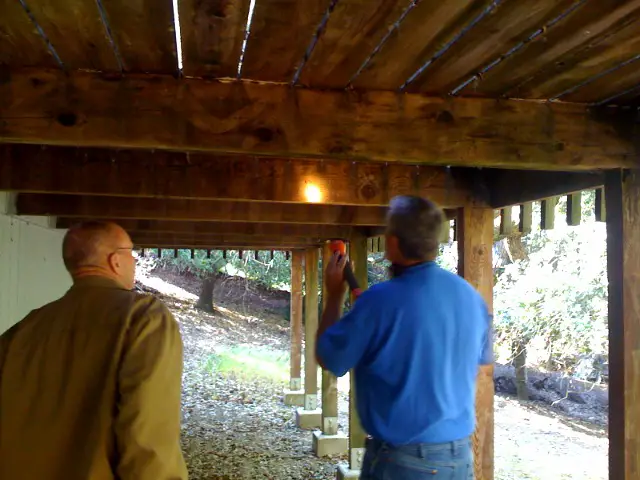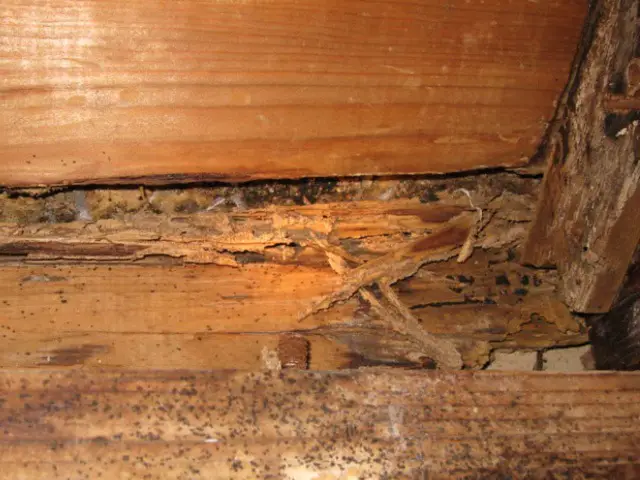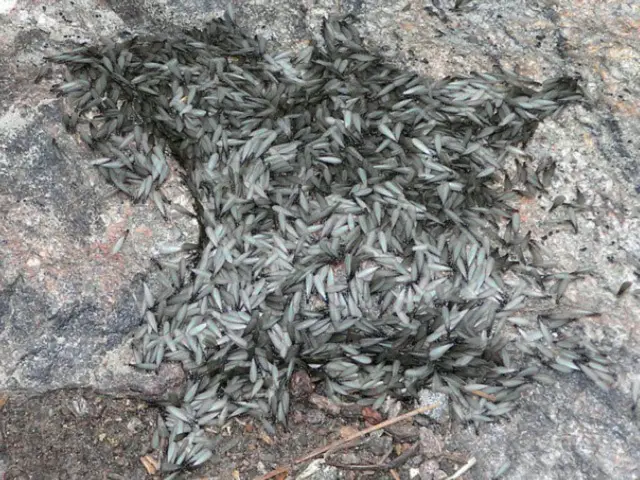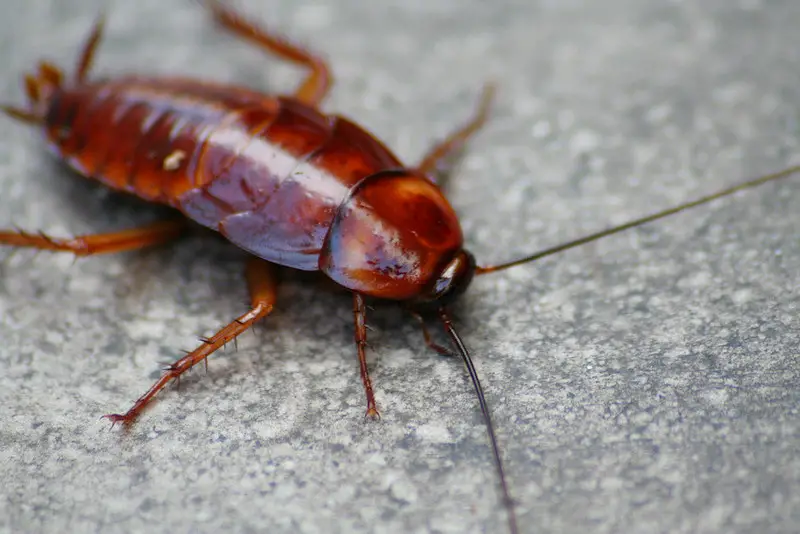True or False: Cheese Attracts Mice to Traps?
For many generations, people believed that mice ate cheese due to cartoons and ancient legends. However, that pungent smell of cheese is actually a turnoff to mice since they would never find such a thing in their natural habitat. As a matter of fact, peanut butter, grains, and fruits high in sugar are what they prefer! Who would have guessed?
Cheese or peanut butter to catch mice?
Cheese is not the right bait to catch mice. Peanut butter is a better bait for catching mice. Mice will eat peanut butter, but it’s not the best bait for catching mice.
Is it better to use peanut butter or cheese in a mouse trap?
It’s better to use peanut butter in a mouse trap. Cheese is not an effective bait for mouse traps.
Is cheese the best mouse bait?
Cheese only works as mouse bait in cartoons. In reality, cheese is not good for mouse traps.
Do mice like the smell of cheese?
Mice don’t like cheese. If anything, mice dislike cheese, especially the stinky kinds.
Why do we think mice love cheese?
There are two theories for this myth:
- For centuries, people mostly ate a diet high in salty meats, hearty breads, and powerful cheeses. Mice tend to eat whatever is lying around, so of course, they are going to nibble on cheese every once in a while if it’s available! Also, the cheese might have been stored in spaces if it needs to “breathe.” And since resting cheese is non-threatening to mice, it made for an easy meal.
- People thought that the strong odor of cheese would attract them to the trap, which we know now, is not the case since mice typically don’t go around crafting their own cheeses; it’s not in their nature.
What do mice really eat?
When mice are hungry, they snack on any crumbs around. Mice will eat cheese, but it is not their first choice. When trying to catch mice, opt for options like peanut butter, chocolate, or any candy high in sugar content. Then, use a piece of thin string-like floss or yarn to secure the food to a mousetrap – this way, the mouse doesn’t simply take the food and scramble away.
Depending on the trap and what you plan to do with the mouse when it is caught (whether it’s killed onsite or you let it free), consider opting for a savory bite since it might be the mouse’s last!
Related post: How do you get rid of rodents fast?
Here are a Few More (Odd) Things that Mice Eat:
Each other! When mice are hungry enough, they eat their own tails, and mother mice will even eat their own children! However, if a piece of cheese is present, they will take a bite of that before turning to cannibalism, which only occurs in moments of extreme stress.
Mice love to chew or wires, cardboard, electrical wires and wood. We have all seen the nibble marks on our garage belongings.
Mice do not eat through walls for the sake of appeasing their hunger; they strategically use their teeth as tools when trying to get from point A to point B and are avid explorers. Their long teeth are like a shovel, great for moving and breaking through unwanted materials.
Other eating facts of mice
Despite the strange eating habits of mice, they crave grains and sugar at the end of the day, just like the rest of us. However, they will eat whatever is around if they are hungry enough (including themselves!), as they tend to eat about 15 to 20 times per day because of their extremely high metabolisms.
They have six taste buds (unlike the human’s five) of sour, salty, bitter, savory, sweet and the extra one: calcium. It is a good idea to let their last meal be a delicious one since they certainly will enjoy it!
There is something for everyone to love about winter, pests included. As it gets colder outside, we all like to spend more time inside, including pests.
The following is a list of unwanted pests that you need to keep your eyes on.
Carpenter Ants
It’s common to believe that once summer is over, all your ant problems will be over. However, that’s not always the case. Not all ants are the same, and some are indeed active during the winter months. A carpenter ant is one of them.
Risks: Luckily, these ants do not come with a health risk to humans. Unluckily, they do come at a risk of doing some damage to your house as these ants make their nests within wood.
What to Look For: If you happen to spot small holes within your wooden structures, you’re going to want to get your wood checked out.
Remedies: Carpenter ants are difficult to get rid of, so your best solution would be to seek professional help from your local pest elimination team.
Box Elder Bugs
If you have Box Elder Bugs in your home, you’ve actually got the best pest that you can get! That sounds weird, but these bugs are only a mere annoyance.
Risks: There are no dangers to this bug to humans or to your house. Regardless, you don’t want bugs in your house, right?
What to Look For: Box Elder Bugs are probably bugs you’ve seen all the time but had not known the name of them. These creepy little buggers are usually bright red and black with reddish narrow lines along their back. They seek out shelter in buildings in the winter, coming in through cracks or crevices in walls, doors, under windows, and around foundations, particularly on south and west exposures.
Remedies: A vacuum cleaner will do the trick if you happen to see these bugs out and about, followed by taking prevention measures. Spraying fast-acting synthetic pyrethroids on exterior walls will help prevent the Box Elder Bugs from returning.
Asian Lady Beetles
The Asian Lady Beetle or Ladybug can actually become a pest. These cute little bugs we all seem to love can actually be annoying to have in your house. Cute or not, nobody wants a bug infestation in their house.
Risks: If you’re into Ladybugs, you have the best pest problem of all. They don’t harm humans or houses! They just infest the place.
What to Look For: Large numbers of adult Ladybugs around buildings. They enjoy outside surfaces of structures; they congregate in the cracks and gaps of the sides and inside of the building and on the walls and ceilings. Also, keep your eyes peeled for a yellow-colored secretion that the beetles may produce and deposit on surfaces.
Remedies: The remedy to a Ladybug problem is preventative. You want to seal cracks and gaps in your house, paying particular attention to sidings, doors, windows, chimneys, ridge, soffit and gable vents, openings around pipes, and conduit and utility wires. Replace any broken door screens and repair any damaged windows.
House Mice
Some find them cute; most find them annoying (and rightfully so)! Odds are, if you see a mouse, you’re going to freak.
Risks: Mice are a danger to both you and your house. For your house, you can get structural damage. These creepy little crawlers chew on wires which can lead to your house catching on fire! For you, they can cause health risks. Mice carry all sorts of nasties; bacteria, diseases, parasites, and viruses. It is crucial to spot the signs and fix the problem ASAP.
What to Look For: Sometimes, you have daring mice that like to bolt out right in front of you when you’re about to do something like watching TV. They are brown, grey, or black in color and are rather small. You may hear them in your walls running about while you’re trying to sleep. You might spot small chew marks on cardboard boxes of your cereal. Or worst of all, you might spot mouse droppings in the corner of your cupboard (or worst of the worst: on your kitchen counter). These droppings are rod-shaped and pointed on both ends.
Remedies: There are preventative remedies. Seal every single crack, crevice, hole and gap larger than a pen cap with something strong, such as cement. Do not use wood as mice can chew through wood. Make sure your house is in tip-top shape in terms of cleanliness, such as washing your dishes immediately after use.
Your best bet to get rid of your mouse infestation is to get the help of trained professionals. This isn’t something you want to mess around with.
Norway Rats
Another creepy rodent that is an annoyance, and a danger to you and your house is the Norway Rat. Here’s what you need to know:
Risks: As is usually common knowledge, like House Mice, Norway Rats carry diseases and can cause structural damage.
The CDC lists 35, yes, 35, diseases directly transmitted by rodents:
- Hantavirus Pulmonary Syndrome
- Hemorrhagic Fever with Renal Syndrome
- Lassa Fever
- Leptospirosis
- Lymphocytic Chorio-meningitis (LCM)
- Omsk Hemorrhagic Fever
- Plague
- Rat-Bite Fever
- Salmonellosis
- South American Arenaviruses (Argentine hemorrhagic fever, Bolivian hemorrhagic fever, Sabiá-associated hemorrhagic fever, Venezuelan hemorrhagic fever)
- Tularemia
What to Look For: As for your house? Keep your eyes peeled for outdoor burrows surrounding the building, gnaw markings on food and objects such as utility lines. Rub marks or grease stains caused by rats running along an edge also can indicate activity. The darker the stain, the greater the activity. Perhaps one of the most well-known signs is their droppings, which are blunt and can be scattered along a rodent pathway. Usually, you won’t see a Norway Rat unless they are forced out of their hiding space due to limited space or disturbances. If you do happen to see a rat, you may have a rather large infestation.
Remedies: Preventative remedies include reducing their food sources, water sources, and shelter sources. Like House Mice, seal all cracks, gaps, and crevices with the tough stuff immediately. Close any object that opens, such as a window or a door. Repair plumbing leaks and remove containers outside that contain standing water.
To get rid of the Norway Rat, you’re going to need professional help.
Black Widows
Black Widows. Black wid-no. You know how Black Widow kicks major butt in The Avengers? She gets her name from one of the most butt-kicking spiders out there. Here’s what you need to know.
Risks: Black Widow bites are poisonous. According to the US National Library of Medicine, a Black Widow bite will feel similar to a pinprick when first bitten. Fifteen minutes to an hour later, the pain will become a dull muscle pain; it will be felt throughout the body. If you were bitten on your upper body, you’d feel most of the pain in your chest. Lower body, and you will feel most of the pain in your abdomen. For more information, please click here.
What to Look For: Black Widows produce messy, irregular webs. Webs can usually be found near ground level and under a protected ledge, such as under lawn furniture or woodpiles. The female with the iconic red hourglass marking also indicates their presence. Inside your home, black widows usually hide in sheltered, dimly lit locations such as garages, dark corners, basements, closets and cluttered areas.
Remedies: Remedies include cleanliness. Eliminate as much clutter as possible in storage areas such as attics and closets. Frequently dust and vacuum around windows, corners of rooms, and under furniture. Always wear gloves when handling debris or material like firewood. Seal cracks to prevent them from coming inside. Use a vacuum cleaner to remove webs, spiders, and egg sacs.
Keep your family safe and your home pest-free this winter. Don’t let unwanted guests ruin your holidays! It would be best to only use eco-friendly products to get rid of any rat infestation that might find its way into your home.




